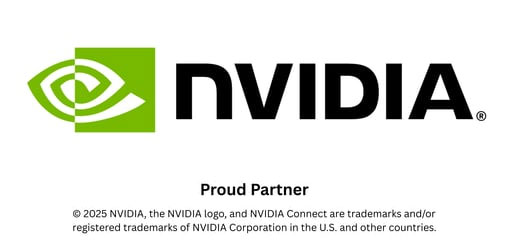While the C-suite debates strategy, many employees are already wielding AI. They summarise reports with ChatGPT, automate spreadsheets with open-source scripts, or spin up personal agents to speed their workflows. These moves are rarely malicious – they’re simply pragmatic. But they carry hidden dangers. Welcome to Shadow AI.
Your AI Policy Is Already Outdated Because the Real AI in Your Company Is Hidden
Shadow AI refers to the unsanctioned or unmanaged use of AI tools by employees or teams, without formal approval, oversight or integration into IT/compliance systems. (IBM defines it as “unauthorised use of AI tools… without approval or oversight.”) IBM
It mirrors Shadow IT, but the stakes are higher: with AI, data leaves the enterprise perimeter, models make decisions, and every prompt or upload can become an exposure vector.
Why it emerges?
Four structural truths drive shadow AI:

Demand outpaces supply
The business wants AI yesterday. Official internal platforms or procurement often move slowly, so knowledge workers turn to what’s fast and accessible.Low friction, high temptation
Many AI tools require only a browser and a credit card. You don’t need to ask IT for access to ChatGPT or a public LLM.Governance vacuum
Early AI policies are often vague or retrospective. Without clear guardrails, people fill the void.Cognitive pressure and survival mode
As workplaces push higher quotas or faster delivery, employees feel compelled to stretch the toolset – whatever they can grab. (IDC’s “stealth productivity” framing captures this well.) IDC Europe Blog
The point: shadow AI is not necessarily disloyalty, it’s often a symptom of an organisation’s inability to meet internal demand.
The Real Risks, Especially for Europe
Because shadow AI operates in the blind, it collides with regulation, security, and brand trust. Some of the top risks:
1. Data leakage & misuse
A user pasting proprietary documents or customer records into a public LLM instantly surrenders control. Many free or baseline AI models claim rights over input/output to train or improve their systems. No Jitter
In one recent enterprise survey, 45% of workers were found pasting data into generative AI, and 22% included personally identifiable information. TechRadar
2. Regulatory noncompliance
Shadow AI frequently flouts GDPR, the EU AI Act, or industry rules. For example, cross-border data transfers, lack of documented consent, or model explainability obligations may be breached without detection. Barrcuda Blog
3. Vendor & model risk
If you use a tool with weak controls or unclear terms, your data becomes part of someone else’s training corpus. The liability is hard to trace.
4. Security & software integrity gaps
Shadow AI tools may expose APIs, plug-ins, or extensions with unknown vulnerability profiles. Without integration into your identity, network or logging systems, they create invisible attack surfaces.
5. Decision opacity & accountability failure
If a business unit uses an AI model to screen CVs, price offers or route customers – but no one knows it, no one can audit it. When outcomes go wrong, the “who did what” trail evaporates. Deloitte
In regulated sectors (finance, healthcare, insurance), these blind spots can invite fines, litigation or brand damage.
Shadow AI Is Not Just a Problem, It's a Signal

Employees don’t always circumvent policy for fun. They do it because they believe policy is too slow, tools are missing, and value is at stake. Shadow AI often highlights latent demand – parts of your business want AI, but you haven’t delivered.
Smart leaders see it as an opportunity:
Where shadow AI use is heavy, that might be a use-case prioritisation signal.
Governance that is too restrictive or slow is part of the problem. People will always find the fastest tool.
Bringing visibility and trust can convert shadow users into power users — with oversight instead of blind risk.
How Leaders Turn the Tide: Visibility, Governance, Incentives
Here’s a playbook that balances risk control with innovation.
1. Start with visibility – detect first
You can’t govern what you can’t see. Use AI discovery tools and anomaly detection across SaaS logs, API calls, and browser extensions. Prompt Security notes many firms have visibility over under 20% of AI tool usage. prompt.security
2. Build a “safe zone of adoption”, not a ban list
Don’t start with condemnation. Build a curated allowlist of vetted AI tools, with clear guardrails (data masking, limited data domains). Invite staff to pilot within those boundaries.
3. Embed guardrails in design
Require client-side or field-level encryption where feasible
Funnel critical workloads to internal or approved EU-hosted models
Enforce prompt sanitisation, output caps, and logging
Integrate human review or fallback on high-risk decisions
4. Govern with clarity
Every AI tool, internal or external, should live in a model registry with metadata: who owns it, data domain, audit logs, versioning, and fallback logic. Make ownership and accountability explicit.
5. Incentivise transparency
Turn shadow AI into open AI by rewarding teams that plug into governance pathways. Use “AI adoption vouchers,” fast-track approvals, and sandbox environments. Make the safe path easier than the rogue path.
6. Train broadly, often
Every stakeholder – ops, legal, marketing – needs baseline AI literacy. Use scenario training: “Should this data go into ChatGPT?” “Does this model need explainability?” Repetition builds judgment.
7. Monitor, audit & adapt continuously
Treat governance as a living system. Monitor outputs, audit usage logs, revisit policy thresholds, and build feedback loops to refine controls.
Europe Adds a Layer: Sovereignty & Compliance
In Europe, shadow AI carries an extra punch:
If a user inadvertently routes data to a U.S.-hosted LLM, you risk GDPR cross-border violation and CLOUD Act / FISA 702 exposure.
Under the EU AI Act, certain systems require explainability, record-keeping and transparency. Shadow AI might bypass these compliance trails.
Your best mitigation is to host critical models in EU sovereign infrastructure, restrict external routing, and force local inference when possible.
This is another reason your organisation’s AI moat must be not just policy, but architecture.
Final Thought
Your AI policy is already outdated. Shadow AI is the real AI most people are using. The question isn’t “will this happen”, it already has. The higher question is: Do you build governance that pushes it into the open, or stay blind to what your own team has unleashed?
Don’t try to ban it; absorb it. Govern it. Mast it. Turn shadow AI into a lens on where your organisation truly needs AI, and make your governance infrastructure stronger, faster, and smarter than your employees’ impulse to DIY.
Victor A. Lausas
Chief Executive Officer
Subscribe to North Atlantic’s email newsletter and get your free copy of my eBook,
Artificial Intelligence Made Unlocked. 👉 https://www.northatlantic.fi/contact/
Discover Europe’s best free AI education platform, NORAI Connect, start learning AI or level up your skills with free AI courses and future-proof your AI knowledge. 👉 https://www.norai.fi/






